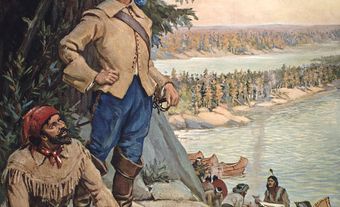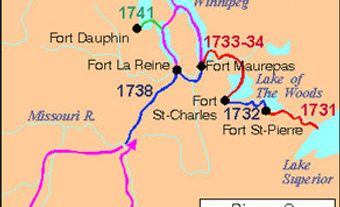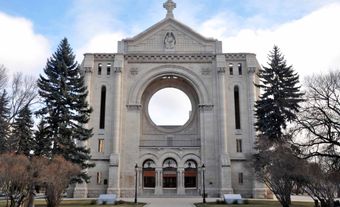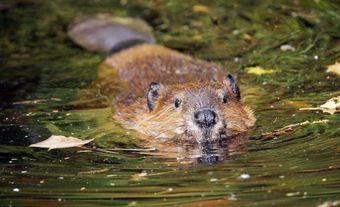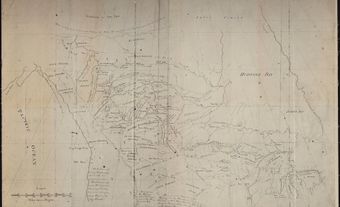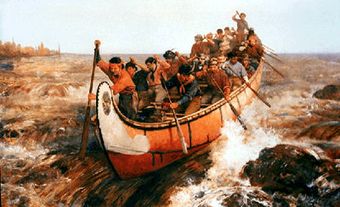Pierre Gaultier de Varennes et de La Vérendrye, military officer, farmer, fur trader, explorer (born at Trois-Rivières, Quebec 17 November 1685; died at Montreal 5 December 1749). The expeditions organized by La Vérendrye and spearheaded by his sons were the first to open the country from Lake Superior to the lower Saskatchewan River and the Missouri River to the French fur trade. La Vérendrye is often portrayed as emblematic of the French-Canadianvoyageur and of French Manitoba in particular.

Source: Bibliothèque et Archives Canada/Collection Arthur H. Hider (C-006896)
La Vérendrye had chosen a military career early in life. He fought during the American phase of the War of the Spanish Succession. In 1708, he was wounded and taken prisoner in France. He was released in 1710 and returned to Canada in 1712. He went on to marry and became a farmer on his wife's land on Île aux Vaches and Île Dupas in Lac St-Pierre. Later, he decided to join his brother Jacques-René when he became commandant of the posts along the north shore of Lake Superior in 1726. After succeeding his brother as commandant in 1728, La Vérendrye began to revive the old dream of discovering a route to the hypothetical "western sea," believed by some geographers to be a large gulf in the western interior that opened to the Pacific. With permission from the French minister of the marine, Jean-Frédéric Phélypeaux, Count of Maurepas, but with no financial backing, La Vérendrye sought and received a three year monopoly on the fur trade of the area in 1731. He formed a partnership with a number of merchants and between 1731 and 1737 he was active building posts from Lake Superior to Lake Winnipeg promoting the fur trade and gathering information from Indigenous peoples. These accounts mentioned two rivers leading west. La Vérendrye named them Rivière Blanche (Saskatchewan) and Rivière de l'Ouest (Missouri).
Maurepas was unhappy with La Vérendrye's progress in exploration (six years to get to Lake Winnipeg), and demanded action. La Vérendrye struck south-west in 1738 to the Mandan country on the Missouri River. It was the only journey of exploration in which he had not been preceded by one of his sons (see Jean-Baptiste Gaultier de La Vérendrye and Louis-Joseph Gaultier de La Vérendrye) or his nephew Christophe Dufrost de La Jemerais. Unsure of what he had found, exhausted physically and financially, La Vérendrye returned to Fort La Reine (see Portage la Prairie) and left further exploration to his sons. In 1742-43 his sons Louis-Joseph and François Gaultier Du Tremblay journeyed south west beyond the Mandan, proving that the sea did not lie in that direction. Meanwhile, La Vérendrye continued the development of the fur trade in the Manitoba Lakes area. Expectations for a major discovery were so high that Maurepas lost patience, blaming La Vérendrye for diverting energies from exploration to trading, and suggested to Governor Beauharnois that he be replaced. In 1743 La Vérendrye resigned but was reappointed in 1746. He planned the exploration of the Saskatchewan River but died before he could undertake it.

 Share on Facebook
Share on Facebook Share on X
Share on X Share by Email
Share by Email Share on Google Classroom
Share on Google Classroom


